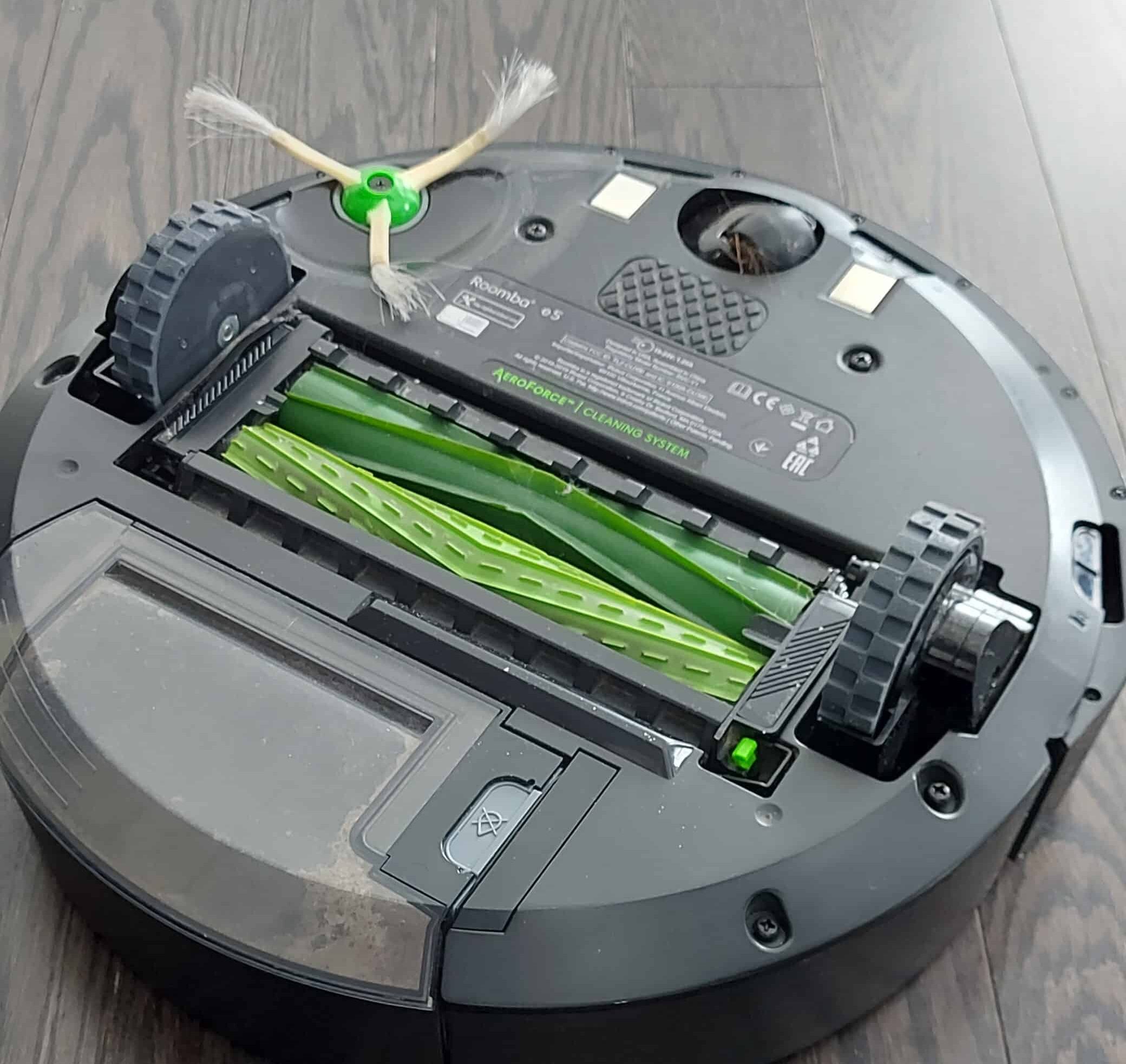Robotic vacuums have become increasingly popular in recent years due to their convenience and efficiency. However, like any other household appliance, they require regular cleaning and maintenance to function optimally.
In this article, we’ll cover everything you need to know about cleaning and maintaining your robotic vacuum.
Clean the Dustbin
The first and most obvious step in cleaning your robotic vacuum is to empty its dustbin regularly. Depending on how often you use your robot vacuum, you may need to empty the dustbin once a week or even daily. This step is essential because a full dustbin can reduce the suction power of your robot vacuum, making it less effective at cleaning.
To be sure, you can also get in the habit of emptying the bin after each use.
Depending on the model you may also be able to wash the dustbin if it’s plastic to clean it completely. Some soapy water usually does the trick unless the manufacturer recommends something else.
Clean the Brushes
The brushes on your robotic vacuum are responsible for sweeping dirt and debris from your floors and carpets into the dustbin. Over time, hair and other debris can get tangled in the brushes, reducing their effectiveness. To clean the brushes, remove them from your vacuum and use a pair of scissors or a brush to remove any tangled hair or debris.
You may also find that hair and other debris wraps itself around each end of the brushes that holds it in place inside the vacuum so they’ll need to be cleaned too. This typically involves pulling the accumulated hair out manually.
You may also need to use a damp cloth to wipe down the brushes and remove any remaining debris. In my experience, hair and other debris often wraps itself around the brushes regularly and can get quite tight to the point that it squeezes and restricts the rubber brushes themselves.
Check the Filters
Robotic vacuums typically have one or more filters that need to be cleaned or replaced regularly. The frequency of filter cleaning or replacement will depend on the type of filter and how often you use your vacuum. Some robotic vacuums have washable filters that can be removed, washed, and then replaced. Other models have pleated filters that may only be brushed to remove dirt and that need to be replaced over time.
Be sure to check your vacuum’s user manual for specific instructions on how to clean or replace the filters.
Clean the Sensors
The sensors on your robotic vacuum are responsible for detecting obstacles and mapping your home’s layout. If the sensors are dirty or obstructed, your vacuum may not be able to navigate your home properly. To clean the sensors, use a clean, dry cloth to wipe them down gently.
Avoid using water or cleaning products, as these can damage the sensors.
Check the Wheels
The wheels on your robotic vacuum can become clogged with dirt and debris over time. This can reduce their effectiveness and make it difficult for your vacuum to move around your home. To clean the wheels, remove them from your vacuum and use a brush or cloth to remove any dirt or debris. You may also need to use a damp cloth to wipe down the wheels and remove any remaining dirt.
Check the Battery
Your robotic vacuum’s battery is an essential component that requires regular maintenance. To extend the life of your battery, be sure to follow the manufacturer’s instructions on charging and storage. If your vacuum’s battery is not holding a charge or is not lasting as long as it used to, it may be time to replace the battery.
Check the Charger Sensors
In my experience, the metal sensors on the bottom of the vacuum can get finicky over time. You might find that they have difficulty seating themselves on the main charger unit over time. Check both the sensors on the bottom of the vacuum and the sensor clips on the actual charging unit that is plugged into the wall regularly.
Store Your Vacuum Properly
When you’re not using your robotic vacuum, be sure to store it properly to prevent damage and ensure optimal performance. Keep it in a dry, cool place away from direct sunlight and heat sources. If you’re storing your vacuum for an extended period, be sure to remove the battery and store it separately.
In conclusion, cleaning and maintaining your robotic vacuum is essential for its performance and longevity. By following the steps outlined in this guide, you can ensure that your vacuum continues to function at its best and keep your home clean and tidy.
Replace Parts As Necessary
Over time various parts will need to be replaced. Removable and replaceable filters will need to be replaced every so often as they simply get too dirty and may not hold dirt. The brushes will start to wear over time and pieces of the rubber can rip or tear. The rotating sweeper will also need to be replaced as the bristles will wear out and lose effectiveness.
Replacement time frames really depend on how often you use your robot vac and how quickly it wears out given your individual cleaning needs.


